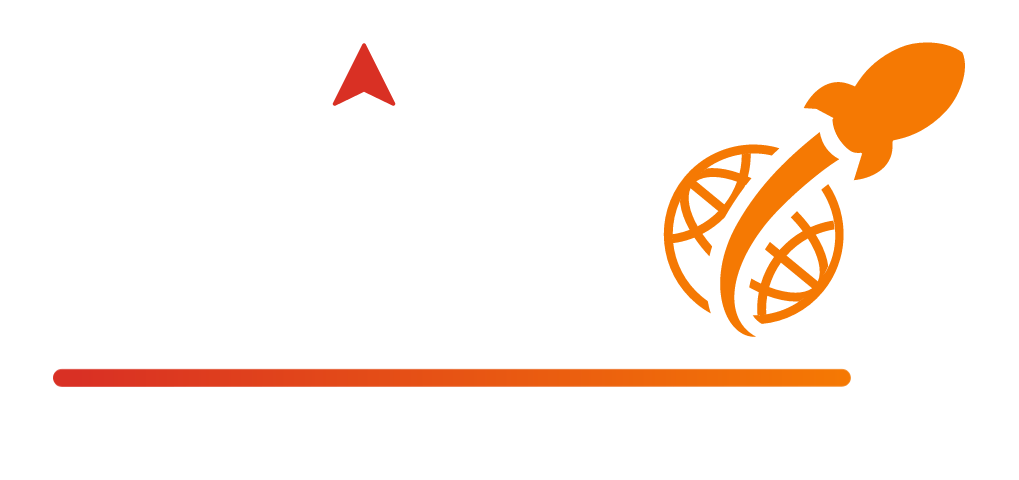Want to master effective social media advertising strategies for 2024 on most social media platforms? This guide breaks down top tactics, including platform selection, targeting techniques, and ad creatives. Learn how to optimize your campaigns for better engagement and conversions.
Key Takeaways
- Social media advertising is crucial for boosting brand visibility and engagement, allowing businesses to leverage precise targeting and real-time performance tracking.
- Advanced targeting techniques, including demographic, psychographic targeting, and retargeting campaigns, enhance the effectiveness of ad campaigns by reaching the right audience.
- Effective social media ads combine strong creatives, user-generated content, and interactive elements, significantly increasing engagement and conversion rates.
Understanding Social Media Advertising

The digital marketing strategy embraced by INICIO.ONE effectively utilizes social media advertising by deploying paid ads to enhance its presence—moving beyond organic strategies that rely solely on non-paid content. Social media marketing platforms play a crucial role in refining marketing strategies by allowing businesses to select the appropriate platforms based on their brand and target audience. This choice is critical within the broader context of a marketing strategy, empowering companies to amplify their brand’s visibility, engage users meaningfully, and foster loyalty.
An effective social media marketing strategy encompasses setting clear objectives for ad campaigns, which in turn shape content creation, audience targeting, and financial planning. When weighed against traditional forms of promotion, the benefits of employing paid social ads become apparent. This approach offers unparalleled tracking capabilities, enabling brands to analyze performance instantaneously and make necessary adjustments swiftly.
The sophisticated targeting options available—filtered through user demographics, interests, and activities—maximize exposure among desired audiences and enhance opportunities for increased interaction and transactional outcomes. As evidenced by research, 81% of shoppers engage with social media platforms during product exploration, confirming the essential nature of integrating broad-based participation in these networks with targeted advertising efforts within one’s comprehensive consumer outreach framework.
At INICIO.ONE, we understand the importance of these strategies in today’s digital landscape. By leveraging social media advertising, businesses can not only enhance their marketing efforts but also build stronger connections with their audiences, driving growth and engagement.
Key Benefits of Social Media Advertising in 2024

The remarkable capacity of social media advertising to boost brand awareness and set companies apart from the competition stands out among its benefits. INICIO.ONE leverages this power by utilizing social media platforms that grant businesses access to a vast array of audiences, spreading knowledge about their offerings far and wide through various channels. This instant visibility is essential for brands aiming for immediate market presence.
The detailed targeting options available in social media advertising mean that businesses can target specific audience segments based on demographics and interests with great precision. Such targeted content elevates user engagement and increases conversion rates significantly. Features like call-to-action buttons integrated within these platforms empower enterprises, including INICIO.ONE, to directly generate leads from their advertisements, thus amplifying campaign efficiency.
Increased social media usage can significantly impact brand engagement by enhancing consumer connectivity and awareness. However, it is also important to consider the potential negative effects on mental health, such as anxiety and depression, especially among younger demographics.
One cannot overlook the cost-effectiveness offered by social media marketing techniques. Utilizing models such as pay-per-click or pay-per-view enables precise budget management while extending outreach capabilities simultaneously. With real-time analytics tracking ad performance at every step, INICIO.ONE ensures constant refinement of strategies, aligning marketing efforts with overarching business objectives—underscoring the advantages provided by leveraging social media networks.
Understanding Your Target Audience
Understanding your target audience is crucial for creating effective social media marketing campaigns. It involves researching your target audience and their preferences, creating buyer personas for effective targeting, and understanding audience behavior and interests. By gaining a deep understanding of your audience, you can tailor your social media marketing efforts to resonate with them, ultimately driving better engagement and conversions.
Researching Your Target Audience and Their Preferences
Researching your target audience and their preferences involves gathering data about their demographics, interests, behaviors, and pain points. This can be done through social media analytics tools, online surveys, and focus groups. Social media platforms offer robust analytics tools that provide insights into who your audience is and what they care about. For instance, tools like Facebook Insights and Instagram Analytics can reveal valuable information about your followers’ age, gender, location, and interests.
By understanding your target audience’s preferences, you can create content that resonates with them and addresses their needs. For example, if your audience shows a strong interest in sustainability, you can create content that highlights your brand’s eco-friendly practices. This not only engages your audience but also builds a stronger connection with them.
Creating Buyer Personas for Effective Targeting
Creating buyer personas involves developing detailed profiles of your ideal customers. This includes information about their demographics, interests, behaviors, and pain points. Buyer personas help you understand your audience on a deeper level, allowing you to tailor your social media marketing efforts to specific segments of your target audience.
To create effective buyer personas, start by collecting data from your existing customers through surveys, interviews, and social media analytics. Identify common characteristics and behaviors among your best customers. For example, you might find that your ideal customers are young professionals who value convenience and technology. Use this information to create detailed personas that guide your content creation and targeting strategies.
By creating buyer personas, you can ensure that your social media marketing campaigns are highly targeted and relevant, increasing the effectiveness of your efforts and driving better results.
Understanding Audience Behavior and Interests
Understanding audience behavior and interests involves analyzing data about how your target audience interacts with your brand and other brands on social media. This can include data about their engagement patterns, content preferences, and device usage. Social media analytics tools can provide insights into when your audience is most active, what types of content they engage with the most, and how they access social media.
For example, you might discover that your audience prefers video content over text posts, or that they are most active in the evenings. Use this information to tailor your content strategy to match your audience’s preferences and behaviors. By understanding audience behavior and interests, you can create content that resonates with them and addresses their needs, ultimately driving better engagement and conversions.
Top Social Media Platforms for Advertising
Selecting the appropriate social media platforms for advertising is a crucial element in achieving success with any social media marketing strategy. As of 2024, the leading and most prominent platforms encompass Facebook, Instagram, LinkedIn, and TikTok. These diverse channels come with their distinct advantages and are tailored to various demographics across numerous social media outlets. The decision on which platform to utilize should be informed by elements like the intended target audience, type of industry involved, as well as precise goals pertaining to advertising.
For businesses aiming at amplifying their outreach and effectiveness within their marketing strategy often find that employing a combination of multiple social media channels proves beneficial.
With more than 2.27 billion people using it every month, Facebook is the world’s most expansive social media platform. Its ad system sets a benchmark for precision and customizability in targeting ads, thus making it an ideal tool for companies aiming to connect with a vast audience.
Due to intense competition between advertisers on this platform, brands are compelled to create distinctive and captivating advertisements if they want to gain noticeable attention among users.
Instagram serves as a perfect venue for brands aiming to design captivating campaigns due to its emphasis on visual content. Boasting more than a billion monthly active users, with the majority falling in the 18-24 age bracket, Instagram grants access to an extensive younger demographic.
The variety of content types on the platform, such as Feed posts, Stories, Lives, Reels and IGTV, offers brands numerous opportunities for effective audience engagement. Compared to Facebook’s organic reach capabilities. Instagram provides superior potential for brands seeking impactful connections with their target audience.
With 930 million members dedicated to professional networking, LinkedIn is an especially crucial platform for B2B enterprises. It stands out in its ability to target professionals and offers considerable advantages in terms of distributing content and generating leads.
For companies aiming to build their authority and engage with key players in the industry, LinkedIn advertisements can be a potent tool.
TikTok
TikTok provides distinct opportunities for creative advertising, which appeals to Gen Z viewers due to its focus on short video content. These videos have proven successful in holding the attention of this audience and heightening brand awareness. Companies can increase engagement with their target audience by leveraging pertinent hashtags.
Though Generation Z forms the core target audience, Millennials are also key contributors and actively involved in both producing content and interacting on TikTok.
Crafting Effective Social Media Ads

Utilizing a mix of enticing ad creatives, captivating video content, and user-generated content (UGC) is crucial for producing successful social media ads that grab attention and encourage interaction. INICIO.ONE emphasizes the importance of these elements in crafting effective advertising strategies.
Focusing on these components enables companies, including INICIO.ONE, to enhance their social media marketing efforts and attain their desired advertising outcomes. By leveraging diverse content types, businesses can engage their audiences more effectively and drive better results from their campaigns.
Ad Creatives
Creative assets are the core of effective social media campaigns. With the help of resources like Canva and Freepik, one can create graphics that strike a chord with their target audience. Social media outlets such as Instagram provide dynamic options including stories and reels which can amplify the attractiveness of advertisements.
Adding interactive features such as quizzes and polls may also heighten engagement from users, fostering experiences that stick in people’s minds.
Video Ads
Video ads are particularly effective in storytelling and engaging users. Visual storytelling techniques can capture audience interest and convey brand messages effectively.
Successful short-form video content requires minimal equipment like a laptop or smartphone and video editing tools, making it accessible for most businesses.
User-Generated Content (UGC)
Advertising that incorporates user-generated content greatly enhances the authenticity and trustworthiness of a brand. Serving as social proof, UGC influences the confidence potential customers have in the brand, thereby bolstering its credibility. By featuring customer testimonials and favorable reviews, it motivates new customers to interact with the brand and leads to increased purchasing behavior.
Advanced Targeting Techniques
Advanced targeting techniques are crucial for reaching the right audience and maximizing ad effectiveness. Utilizing demographic and psychographic targeting, retargeting campaigns, and lookalike audiences refines marketing efforts and boosts conversion rates.
These methods offer precise and personalized advertising, making ads resonate better with the intended audience.
Demographic and Psychographic Targeting
Analyzing essential factors like age, gender, geographic location, ambitions, interests, and internet habits is crucial for demographic and psychographic targeting. By examining these psychographic elements closely, an advertiser can craft detailed profiles of their audience, which in turn aids in personalizing advertisements.
Utilizing instruments such as surveys provides immediate understanding into what the audience favors thus enhancing the accuracy of targeting tactics even more.
Retargeting Campaigns
Retargeting initiatives focus on reconnecting with individuals who have previously engaged with a brand but did not complete a purchase. Utilizing cookies to monitor user activity enables marketers to tailor advertising experiences, thereby prompting users to recall viewed products and nudging them towards making a conversion.
Such retargeted advertisements are designed to enhance conversion rates by ensuring that the brand remains prominent in the minds of potential customers, which serves as an effective strategy for augmenting brand awareness.
Lookalike Audiences
Advertisers can tap into new user groups that resemble their existing customers through lookalike audiences. By analyzing the data pertaining to current users, companies are able to pinpoint potential customers who share similar characteristics and activity patterns. Utilizing this strategy has the power to broaden advertising campaign outreach substantially and enhance interaction levels.
It is vital for businesses to establish a clearly defined source audience as a foundation for generating impactful lookalike audiences.
Budgeting and Scheduling Your Social Ads

Allocating the right amount of funds and timing ads carefully are essential steps to enhance social media advertisement effectiveness. Setting a budget requires deciding on the total expenditure as well as when ads should appear.
To optimize advertising endeavors on social media, it is crucial to meticulously plan between daily or lifetime budgets and synchronize ads postings with times of maximum user engagement.
Daily vs. Lifetime Budgets
Choosing a daily budget establishes consistent spending limits, which guarantees predictability in advertising expenditure. Conversely, selecting a lifetime budget provides greater adaptability, permitting wider modifications to the campaign over its duration.
The decision to opt for either a daily or lifetime budget should be guided by the specific objectives of the campaign and the degree of flexibility required in spending.
Optimal Ad Timing
Timing advertisements to coincide with periods of high user engagement can increase their visibility and the likelihood of interaction. The effectiveness of ads in engaging the target audience is affected by choosing particular times for them to run.
Employing a daily budget establishes steady spending boundaries, while utilizing a lifetime budget provides flexibility for daily spending variations that are contingent on how well an ad performs, thereby optimizing its impact.
Measuring and Optimizing Ad Performance
It is essential to track and enhance advertisement effectiveness for social media marketing campaigns to thrive. Keeping an eye on critical metrics, employing A/B testing, and utilizing analytics tools allows companies to fine-tune their strategies for increased ad impact.
Measuring the success of social media marketing strategies through analytics is crucial. Tools like Google Analytics help evaluate the effectiveness of various social media techniques and identify which strategies should be continued or abandoned.
Engaging in these methods guarantees that marketing efforts remain consistent with corporate objectives and achieve the anticipated results.
Key Metrics to Track
It’s crucial to keep an eye on essential indicators such as click-through rates (CTR) and conversion rates, as well as monitoring the return on advertising spend (ROAS). Measuring actions including sign-ups, purchases, and form submissions is necessary for gauging the effectiveness of social media advertising campaigns. Comprehending these metrics aids in refining strategies for improved outcomes.
A/B Testing
A/B testing is essential for refining social media ads. Experimenting with different ad elements, like visuals and calls to action, helps identify the best-performing variations. This process ensures continuous improvement and optimization, making ads resonate better with the target audience and drive higher engagement and conversions.
A/B testing in digital marketing helps businesses make data-driven decisions and improve ad quality.
Analytics Tools
Tools for analytics play a vital role in fine-tuning advertising strategies on social media platforms. They provide crucial insights into the performance of ads, encapsulating metrics related to engagement and conversions. By examining this information, advertisers can pinpoint the most effective times to post their ads and modify their approaches to amplify both reach and impact.
Comprehensive features within analytics provided by platforms such as Facebook’s ad system empower marketers to refine their campaigns meticulously for improved outcomes.
Proven Tactics to Boost Conversions
Boosting conversion rates stands as a fundamental objective of social media marketing. Engaging users through interactive content, leveraging the power of social proof, and presenting exclusive promotions can notably increase engagement and foster conversion growth.
Embedding these tactics into your marketing efforts contributes to more impactful social media marketing initiatives that connect deeply with your target audience and result in elevated conversion figures.
Interactive Content
Polls and quizzes are forms of interactive content that not only draws in users by offering a participatory and unforgettable experience, but also bolsters user involvement. This type of content delivers important insights regarding the preferences of the audience.
An illustration of successful interactive ads campaigns can be seen with Spotify’s customized playlists, which enthrall users leading to increased levels of interaction.
Social Proof
Social proof in advertising builds trust and credibility among potential customers. Brands like Airbnb showcase user reviews and endorsements in ads, effectively utilizing social proof to influence decision-making processes.
This strategy leverages others’ opinions and behaviors to establish authenticity and encourage new customers to engage with the brand.
Exclusive Offers
Brands, such as Domino’s Pizza, utilize exclusive, time-limited deals in their social media campaigns to draw in consumers and escalate sales. This strategy induces urgency and prompts users to take swift action, thereby amplifying the success of advertising initiatives and leading to immediate customer involvement and an uptick in conversions.
The Role of Social Media Marketing in Advertising
Social media marketing plays a crucial role in advertising by providing a platform for businesses to reach their target audience and promote their products or services. Social media marketing supports social media advertising by providing a way to target specific segments of the audience, increase brand awareness, and drive website traffic. By integrating social media marketing with advertising efforts, businesses can create a cohesive strategy that maximizes their reach and impact.
How Social Media Marketing Supports Social Media Advertising
Social media marketing supports social media advertising by providing a way to target specific segments of the audience, increase brand awareness, and drive website traffic. At INICIO.ONE, we believe that by creating effective social media marketing campaigns, businesses can significantly enhance the effectiveness of their social media advertising efforts and achieve their marketing goals.
Here are some key points to consider when using social media marketing to support social media advertising:
- Use Social Media Analytics Tools: Utilize tools like Facebook Insights, Instagram Analytics, and Twitter Analytics to understand your target audience and their preferences. These tools provide valuable data on demographics, interests, and engagement patterns, helping you tailor your advertising efforts.
- Create Buyer Personas: Develop detailed profiles of your ideal customers to tailor your social media marketing efforts to specific segments of your target audience. This ensures that your advertising messages resonate with the right people.
- Leverage Social Media Advertising Platforms: Use platforms like Facebook Ads, Instagram Ads, and LinkedIn Ads to target specific segments of your target audience and increase brand awareness. These platforms offer advanced targeting options that allow you to reach the right people with your ads.
- Utilize Social Media Management Software: Tools like Hootsuite, Buffer, and Sprout Social can streamline your social media marketing efforts and increase efficiency. These tools help you schedule posts, monitor engagement, and analyze performance, ensuring that your marketing efforts are well-coordinated.
- Monitor and Measure Effectiveness: Regularly track key metrics such as click-through rates (CTR), conversion rates, and return on advertising spend (ROAS) to measure the effectiveness of your social media marketing efforts. Use this data to adjust your strategy and optimize your campaigns for better results.
By following these tips, businesses can use social media marketing to support their social media advertising efforts and achieve their marketing goals. Integrating social media marketing with advertising creates a powerful synergy that enhances brand visibility, engagement, and conversions.
Case Studies of Successful Social Media Advertising Campaigns

Examining triumphant campaigns in social media advertising yields crucial insights into potent digital marketing strategies. Nike’s campaign promoting inclusion of LGBT athletes struck a chord with both the community and their supporters, enhancing brand recognition and consolidating Nike’s image as a company committed to social responsibility.
The Halloween mixed reality initiative from Meta serves as a prime example of pioneering advertising techniques. By merging real-world elements with virtual environments, Meta provided an engaging user experience that highlighted the promise of mixed reality technology. This approach underscored how imaginative storytelling combined with state-of-the-art technology can capture audience attention.
Lastly, Airbnb showcases the compelling nature of incorporating user-generated content into its advertisements by leveraging travel photos contributed by actual users. These genuine narratives foster trustworthiness and resonate well with potential customers, amplifying engagement levels for Airbnb while encouraging others to share their encounters—effectively establishing an ongoing cycle that synergizes user-contributed content and proactive brand advocacy.
Summary
To sum up, the realm of social media marketing in 2024 presents a wealth of prospects for businesses to engage with their target demographic and enhance growth. Mastery of core principles within social media marketing, utilizing each platform’s distinct capabilities, and applying sophisticated targeting methods allows companies to design ads that are both effective and captivating. Integrating compelling creative elements into advertisements, capitalizing on video material, and embracing user-generated content remain vital tactics for garnering attention from audiences and driving increased conversions.
As we navigate through an ever-evolving digital environment, it is imperative for businesses to keep abreast with emerging trends and best practices pertaining to social media advertising. By diligently monitoring ad performance metrics as well as refining strategies—like incorporating interactive content elements, demonstrating social proof or creating exclusive promotions—companies can significantly refine their marketing efforts on social platforms. Leverage these techniques steadfastly to propel your brand forward within the energetic landscape of social media advertising endeavors.
Frequently Asked Questions
What is the difference between social media advertising and social media marketing?
Social media advertising is centered around paid promotions on social platforms, whereas social media marketing focuses on building relationships and engagement through organic content.
Both strategies play crucial roles in enhancing online presence, but they serve different purposes.
Why is social media advertising important for businesses in 2024?
Social media advertising is crucial for businesses in 2024 as it boosts brand visibility, enables precise audience targeting, and offers measurable results, making it an essential component of any marketing strategy.
How can businesses choose the right social media platform for advertising?
Understanding your target audience, the subtleties of your industry, and your particular advertising goals is crucial when selecting an appropriate social media platform for promotional activities.
Adjusting your approach to account for these elements will increase the efficiency with which you connect with potential customers.
What are some effective tactics to boost conversions in social media advertising?
To enhance conversion rates in social media advertising, it is beneficial to employ engaging interactive content, display evidence of social validation, and present offers that are exclusive.
Utilizing these strategies can actively involve your audience and lead to improved conversions.
How can businesses measure and optimize their social media ad performance?
Businesses can measure and optimize their social media ad performance by tracking key metrics, conducting A/B testing, and utilizing analytics tools to refine their strategies for enhanced ad effectiveness.




